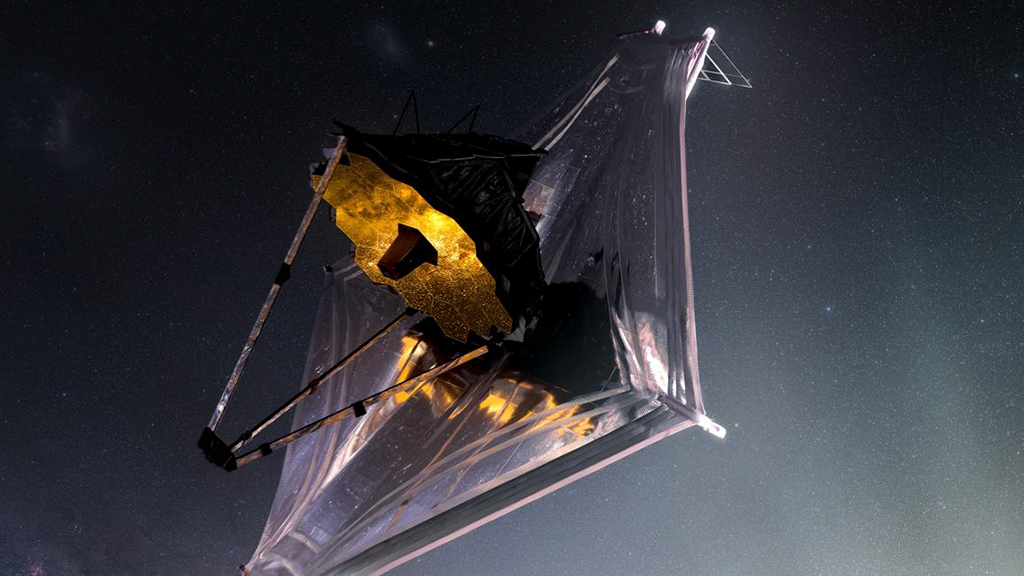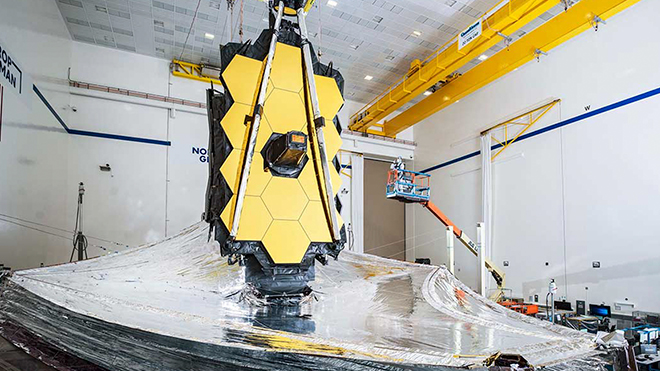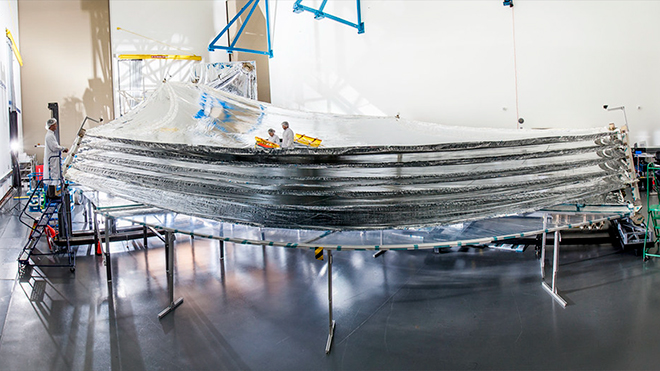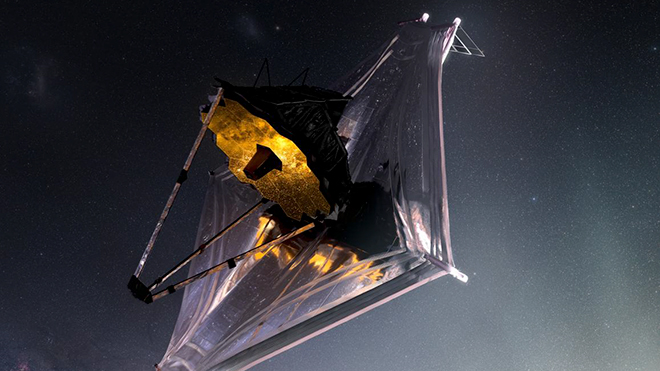NSTA / Northrop Grumman Playlist
Energy Transfer in the JWST System

Sensemaking Checklist




Storylines start with an anchoring phenomenon that raises questions or introduces a problem. Each step in a storyline unit is then driven by students’ questions that arise from the phenomenon.
In this case, the anchoring phenomenon involves the temperature requirements of the infrared instruments on the James Webb Space Telescope (JWST) and the difference in temperature between the hot and cold sides of the system.
- The James Webb Space Telescope (JWST)’s system has a hot side where temperatures reach 185 F (85 C, 358.15 K) and a cold side with infrared instruments that need to be at minimum –388 F (-233 C, 40 K) need to work properly.
- On the hot side, a sunshield with five layers helps keep the infrared instruments at their operating temperatures (cold side). While the outermost layer of the sunshield can reach around 230 degrees Fahrenheit, the coldest layer near the instruments reaches approximately -394 degrees Fahrenheit. (NASA, Space.com)
The first day of the unit provides opportunities for students to consider what they do and don't know about energy transfer on Earth and in space. In doing so, they will begin to make sense of Disciplinary Core Ideas related to energy and energy transfer through conduction and radiation.





